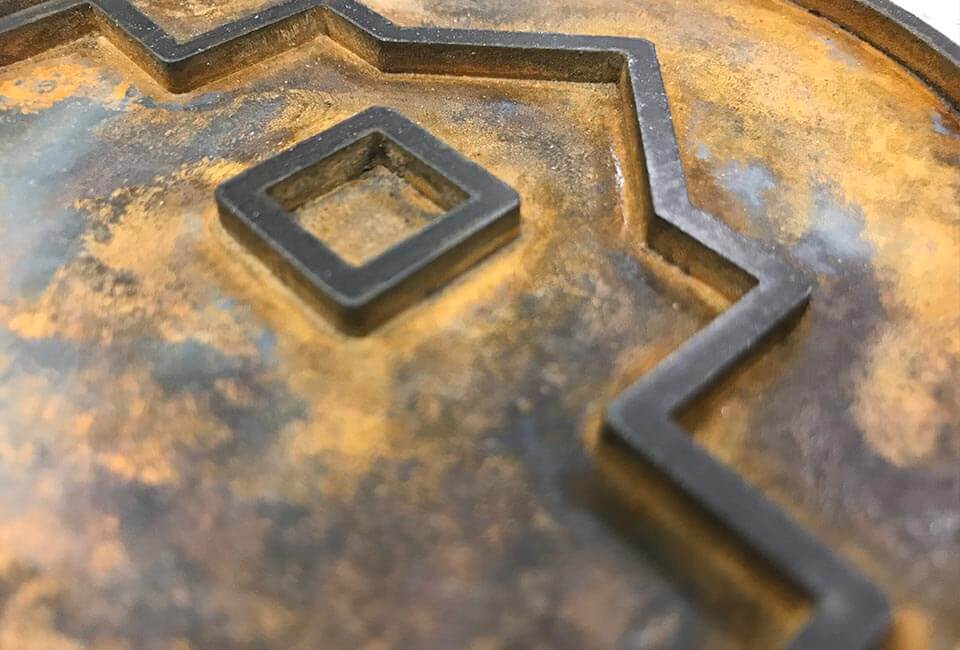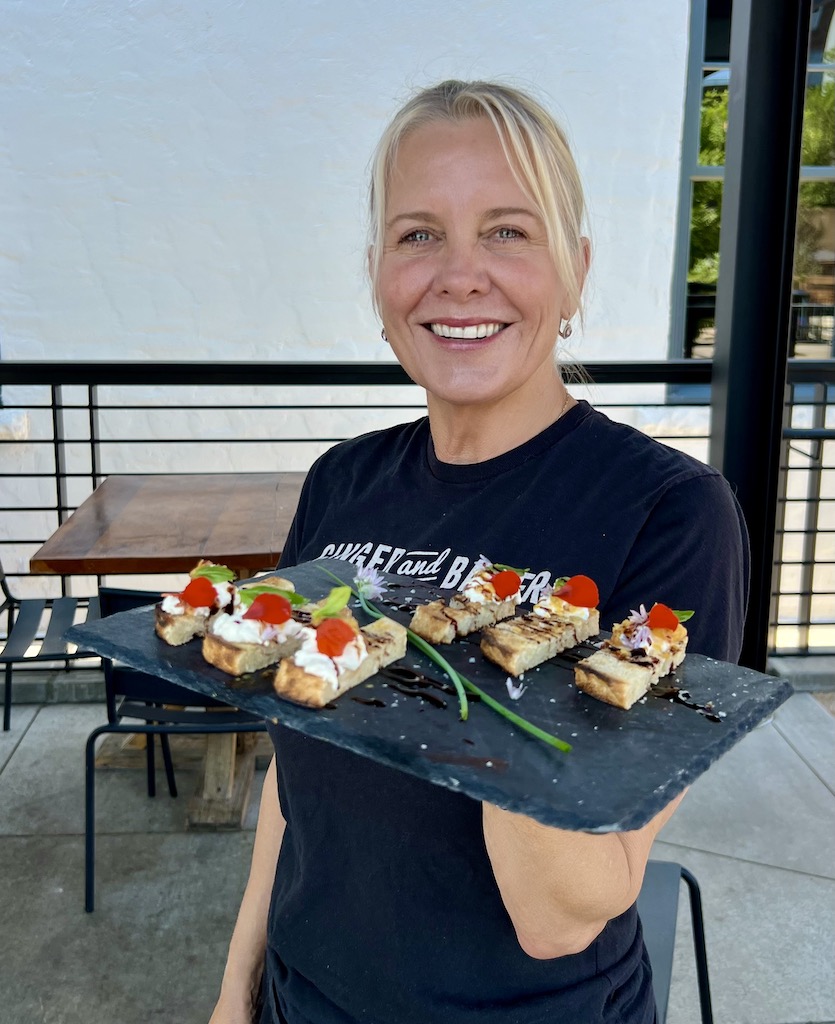
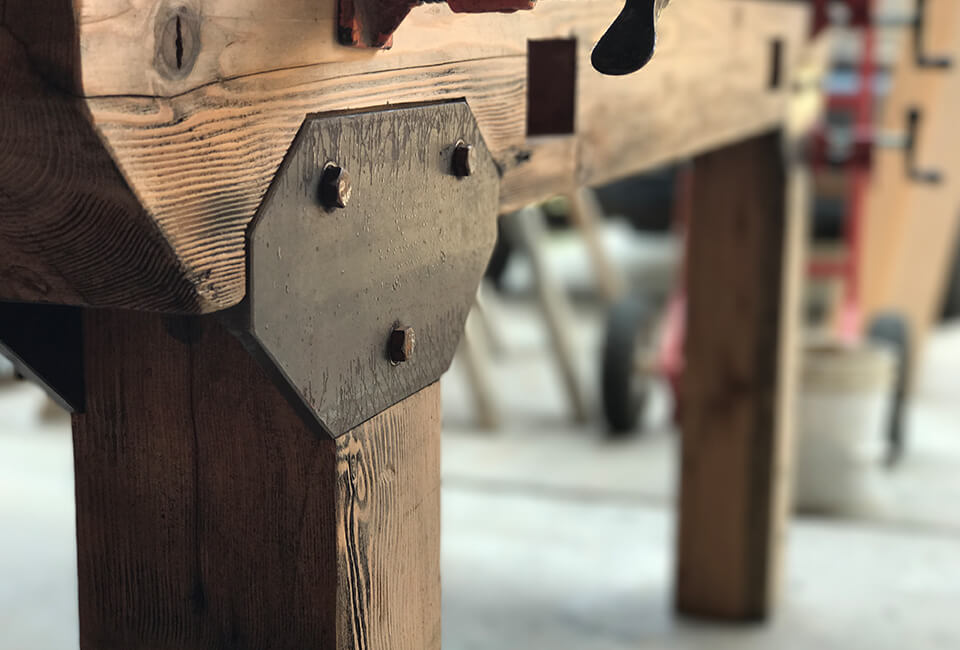
Taking inspiration from salvage
Over the past months of restoration and construction, we’ve been incredibly lucky to work with a number of skilled craftsmen and women who have helped bring Ginger and Baker to life. Forrest Cramer of Pin & Scroll is one of those people, a master woodworker who’s hard at work creating some of our furniture, much of it made from wood salvaged from the old Feeders Supply grain mill.
 When Forrest first saw the project getting underway last year he contacted us, and after meeting him we knew he’d be a perfect fit. “I’ve loved that old building forever and my wife and I have close ties with the old owners of the mill,” Forrest said. “So when I heard about the Ginger and Baker project, I wanted to learn more.”
When Forrest first saw the project getting underway last year he contacted us, and after meeting him we knew he’d be a perfect fit. “I’ve loved that old building forever and my wife and I have close ties with the old owners of the mill,” Forrest said. “So when I heard about the Ginger and Baker project, I wanted to learn more.”

Forrest is aptly named; he’s been working with wood since he was a kid doing projects with his dad. He honed his fine woodworking skills apprenticing with a violinmaker before moving into antique restoration. As he restored fine old pieces for his clients, he discovered a need for creating new pieces to match the old, using the same centuries-old craftsmanship.
He started Pin & Scroll in 2011, naming his company after a joinery technique used during the 1800’s.* While this kind of joint didn’t come into play with the furniture for Ginger and Baker, Forrest stuck to using historic techniques. “Everything I did for Ginger and Baker came down to really traditional joinery,” Forrest said. “Old school, with very few nails. Tongue and groove, mortise and tenon, cope and stick. I wanted to honor the character of the old building.”
But getting to the point where he could implement those techniques wasn’t easy. First, Forrest had to dig through the piles of material salvaged from the old mill, most of it from flooring, catwalks, beams and ceilings. He spent days ripping nails out and pulling the old native fir apart to find enough lumber for his needs. “One of the coolest things was that the old flooring was laid with 150-year-old hand-forged square nails,” said Forrest.
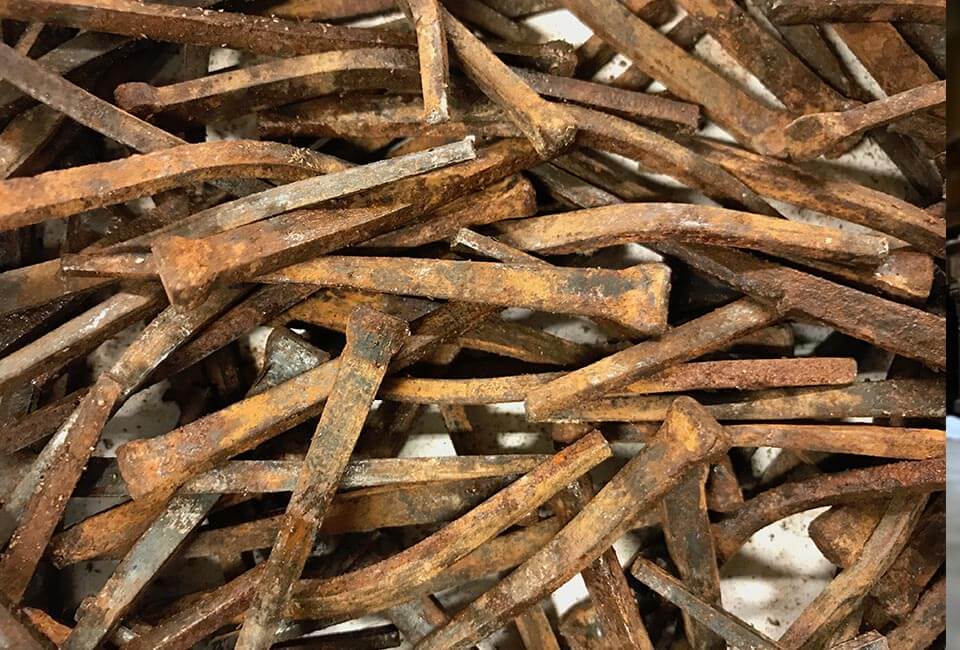
Through the process, Forrest said it became clear that this old beat up wood might just make amazing furniture. “It’s wood that’s over a century old from an historic building,” Forrest said. “So I wanted to pay some homage to that with the finished pieces, I wanted to leave some nail holes, and highlight the fact that this old wood has an historic look that you just can’t duplicate.”
With the wood now in his shop in Wellington, Forrest is working on using some of the reclaimed fir flooring to create a thirteen-foot-long display case for the Market. Many of the piece’s panels recreate the old (unsalvageable) bead board ceiling that was found in the mill’s old entry. Once finished, the piece will head back into the building where it came from, providing space for a new generation of “feed and supplies.”
For the Teaching Kitchen, wood from the mill’s solid old 6×6 support timbers are in the process of becoming beautifully sturdy worktables. Taking inspiration from the big, cast steel brackets that once supported those old beams in the mill, Forrest recreated the brackets on a smaller scale to give the tables even more character. (See picture at top of page.)
An antique buffet owned by Ginger’s grandmother was the model for a twelve-foot-long walnut buffet that is also destined for the Teaching Kitchen. “Ginger sent over a photo and I took design ideas from that and expanded them to fit the space,” Forrest said. “It harkens back to a style from 1880 to 1900 – beaded trim, curved doors, really delicate trim around everything. It screams Victorian but it’s a twelve-foot long piece that you never would have seen back then.”
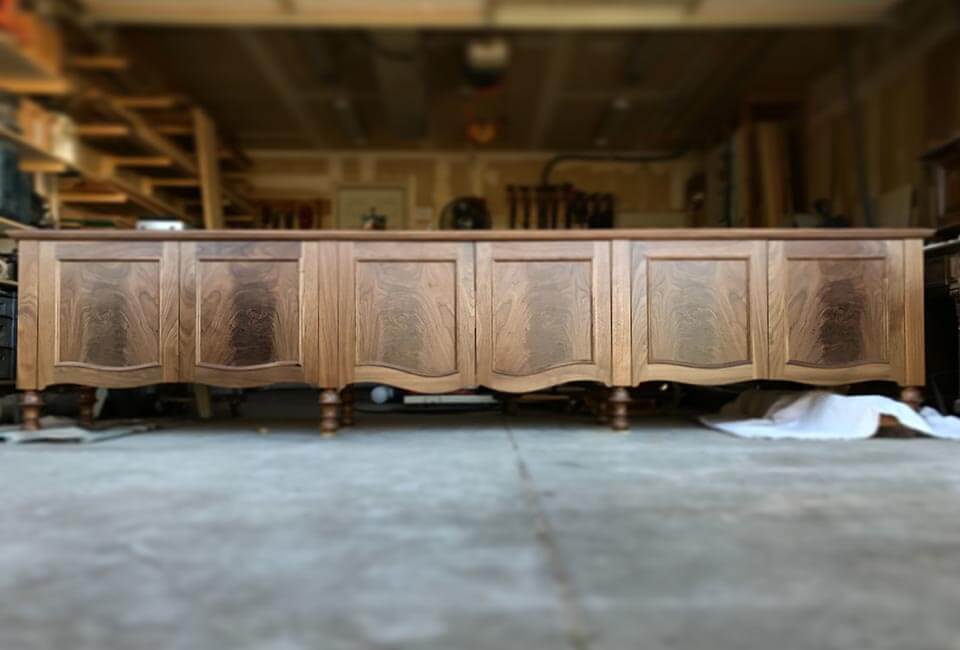
For us, it’s been inspiring to watch Forrest create magic from salvage. It’s really special that so many of his pieces are headed for the Teaching Kitchen where they’ll hopefully inspire everyone as we learn and create. Forrest said his goal was to build heirloom pieces that would last more than 100 years. Here’s to that and to welcoming you in within the next few weeks!
*Note to woodworkers: the Pin & Scroll technique is more commonly known as “Pin and Crescent” or “Knapp Joint”
